How do we react in a time of crisis? How do we carry on after it is over? The following details the experiences and travels of three family members from the years 1855 to 1857, with the critical year of 1856 highlighted as a time of crisis: Grandmother Sophie Petersen Smith, Grandfather Albert Smith, and Grandmother Ann Findley Westover.
Sophie is the grandmother of Mary Ann Smith Westover, wife to Arnold Westover. Albert Smith is the grandfather of Mary Ann Smith Westover.
Ann Findley Westover is the wife of Edwin Ruthven Westover.
“This spring I put in 50 acres to wheat and oats…but it was the wrong year, for as I stated the land was filled last fall with grasshopper eggs. The result was the spring about the time the grain was coming up the ground was black with little hoppers and they destroyed it as fast as it came up…1Albert Smith Journal, May 10th 1855 ”
When it came to grasshoppers this was not Albert’s first rodeo.
It was on his Salt Lake valley farm that the miracle of the seagulls took place.
“When I got in sight of my grain I saw that it was covered with Sea Gulls” Albert wrote in 1849 . “I stopped till they flew to another part of the field. What was my joy and surprise when I went to the place and found every cricket destroyed. There was not one single one alive to be found while dead ones laid in heaps where the gulls had thrown them up on the ground they would fill themselves again and so continue to do. The Indians said that they were new birds that they had never saw them before. I raised a large crop for 10 acres2Albert Smith Journal, April 10th, 1849 ”.
But in 1855 it was a different story.
A series of natural disasters created conditions leading to a widespread famine in Utah. Food supplies and agricultural productivity became dire as a hot dry summer and light runoff from the mountains caused a severe drought.
“Grasshoppers were likely to eat anything. Wheat was a favorite grain, but they enthusiastically tackled corn, oats, barley, lucerne, and clover—even grass. They ate almost all garden crops—potatoes, onions, peppers, rhubarb, beets, cabbages, radishes, turnips, tomatoes. One informant indicated that they seemed to prefer the strong or pungent vegetables. They stripped orchards and vineyards, eating even the bark of the trees. “Even shawls or sheets thrown over plants or trees to protect them would be quickly destroyed.3History to Go”Like other trials through which the Latter-day Saints had passed, the grasshopper invasions were often looked upon as tests imposed by Providence—tests of their faith, preparedness, ability to call upon deity in prayer, dedication to the cause.
Drawing from their biblical and Christian traditions, the Latter-day Saint leaders asserted that such trials were the means by which God reminded his children of their dependence on him, calling them back from their materialism, worldliness, and self-sufficiency. “The Lord chasteneth those he loveth”—this old theme had its Mormon counterparts.
In the face of the grasshopper challenge the Saints were exhorted to have faith that they would receive help from the Lord. “Exercise your faith, brethren,” said the Deseret News on April 25, 1855, “that the Lord may bless your crops, rebuke the destroyer, and bring your labors and exertions to a successful issue.”
Brigham Young, however, was not one to encourage living by faith alone. He was well known for his admonition “to plant enough for yourselves and the grasshoppers”.
The situation in 1855 was real and desperate. By September 1st, Albert had to do something to feed his family.
“We heard that there was a good crop raised up north of Ogden where two of my Bro in laws lived… I saw no alternative for me only to go there and get some grain, yet I had nothing to buy with so I had to go and get it by faith. I hooked my 2 yoke of oxen to my wagon, took plenty of sacks and Emily with her two babies and Almon her oldest child a lad of six years old and started for Ogden for wheat. We had good luck going there and we found our friends all well. Near by one of my bro in laws there was a large field where there was good chances for to glean. I improved every minute of my time that I could for 16 days, gathered it together and thrashed it, cleaned and put it in to sacks and when it was done I had 22 twenty two bushels of wheat. Emily got 8 to 10 bushels which made me as big a load as I could haul with 2 yoke of oxen.4Albert Smith Journal, 1 September 1855 ”
The famine of 1855 and 1856 set the stage for much of what you are about to read.
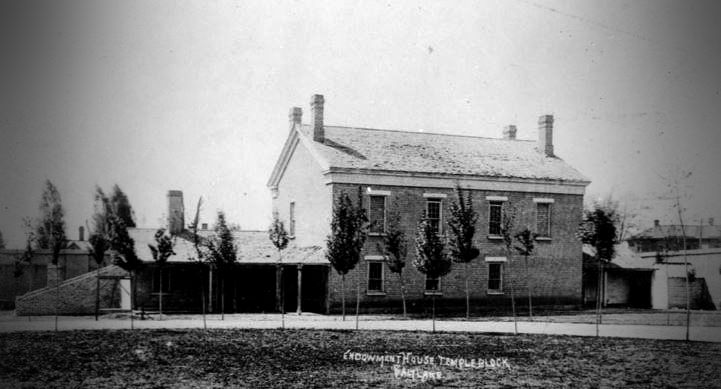
The Endowment House was dedicated in 1855. It would see a lot of activity from our family members in 1856-57.
The call to gather to Zion had come years earlier.
In 1849 Brigham Young said, “Come! And help us to build and grow, until we can say, enough – the valleys of Ephraim are full”.
And come they did. From 1847 to 1869 — known as the pioneer era in Utah – more than 70,000 “saints” gathered to Zion from all over the world.
Europe was by far the largest contributor to the growing population of Zion. The missionary efforts of the Church in Europe had swollen the ranks to better than 30,000 members there by 1852.
By comparison the Church in Utah had but 11,000 members.
To facilitate the move the Church had established the Perpetual Emigration Fund. It was re-seeded in 1856 by Brigham himself, who donated tens of thousands of dollars in property to help those in England who wanted to come.
Years earlier Brigham had served a mission among the poor of Europe. He knew well the people the fund would help.
Millen Atwood, a missionary who served in England who would be called to help captain the Willie Handcart Company, said: “They have prayed and fasted day after day and night after night, that they might unite with their brethren and sisters in these mountains. When Brother Brigham offered his property so liberally, and the word came that they should gather from England, it ran like fir in dry stubble…”
From History of the Saints Vol 2 – No Unhallowed Hand we read:
By the October 1855 general conference, Brigham Young knew the Saints in Utah Territory were in trouble. Grasshoppers had ravaged many of their gardens and fields, and the drought had destroyed what the grasshoppers had not. Dust clouds blew across the valleys, and wildfires burned through the dry canyons, destroying fodder for cattle. With no way to feed the ox teams hauling stone to the temple site, work on the house of the Lord ceased.
Brigham and his counselors believed the drought and infestation were a “gentle chastening” from the Lord. “Give heed unto the whisperings of the Spirit and tempt not the Lord to bring upon us a heavier rod of discipline,” they instructed the Saints that fall, “that we may more fully escape those judgments of high heaven’s King.”
More concerning to Brigham was the effect of the devastation on the gathering. While the missions to India, China, and Siam had resulted in few conversions, the missions in Europe and South Africa had produced branches of Saints who now wanted to gather to Zion. Emigration was expensive, however, and most of the new converts were poor and needed loans from the Perpetual Emigrating Fund.
Unfortunately, the drought had wrecked the economy in Utah, which depended almost entirely on successful harvests. Robbed of their livelihood, many Saints could not pay tithing or repay their loans to the fund. And soon the Church accrued a steep debt by borrowing money to help finance the large wagon trains coming west that year.
In an October 1855 epistle to the Saints, the First Presidency reminded Church members that donating to the emigrating fund helped to bring their fellow Saints to a place where they could enjoy industry and honest labor. “This is true charity,” the presidency declared, “not only to feed the hungry and clothe the naked, but to place them in a situation where they can produce by their own labor their subsistence.”
Brigham and his counselors urged the Saints to donate what they could to the Perpetual Emigrating Fund. Aware that most Saints could not contribute much, they also proposed a more affordable way to gather. Rather than coming to Zion with expensive oxen and wagons, future emigrants could come by handcarts instead.
Pulling handcarts over the plains, the First Presidency explained, would be faster and cheaper than traveling by wagon. Each handcart would consist of a wooden box sitting on an axle and two wagon wheels. Since handcarts were smaller than wagons, the emigrants would not be able to carry as many supplies and provisions with them. But wagons from the valley could meet the handcarts partway to provide assistance as needed.
“Let all the Saints, who can, gather up for Zion and come while the way is open before them,” the First Presidency declared. “Let them come on foot, with handcarts or wheelbarrows; let them gird up their loins and walk through, and nothing shall hinder or stay them.5History of the Saints – No Unhallowed Hand, Chapter 14 ”
For the Findley family of Markinch, Scotland this was welcome direction.
William Findley, age 46, was anxious to get his wife, Linzy (45), and 17-year-old daughter Ann to Utah to reunite with his son, also named William, who had come over in 1854 with his wife Sarah6History of William Findley, Jr. FamilySearch.org .
They were part of the working poor that occupied the mind of Brigham Young so much and that inspired the creation of the Perpetual Emigration Fund. Without it, the Findleys would never be able to come to Zion.
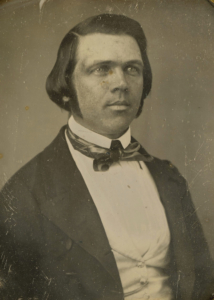
Franklin D. Richards – Courtesy of the Church History Library, The Church of Jesus Christ of Latter-day Saiints
Arrangements were immediately made for the Findleys to sell their possessions in Scotland and head to Liverpool to ship out with other gathered Saints in the spring of 1856.
We have told the story of Grandma Sophie before. As with most stories of families in crisis there are actually a series of crises that occurred.
For Sophie, it began in her native land of Denmark with the death of her husband Peder.
Peder was a postal worker and together with Sophie built a life and had a family near Copenhagen, Denmark. Previous to Peder’s death the Petersens lost two children to unknown causes as infants.
Peder died of cholera8History of SOPHIE CATRINE WILHELMINE KLAUEN PEDERSEN SMITH, Compiled by Carol Green, FamilySearch.org , which famously ravaged Denmark in 1853. Cholera is considered a long-cycle waterborne disease that can also thrive in short-cycle periods through food and community spread circumstances. Its singular symptom is severe diarrhea.
It emerged in June 1853 and by August 8th, Peder was gone. With his passing Sophie’s life instantly changed.
She was 29 years old and had five surviving children: Peder (7), Thomas (5), Emma (3), Ane (2) and Sophie was pregnant with Otto, who would not be born until April of 1854.
Peder’s passing left Sophie desperate. His passing was sudden and due to the contagious nature of his death she did not get to see his body after he died.
As her many histories have recorded Sophie had a vivid dream during her period of grief.
She dreamed she was putting her laundry out to dry on a line and saw two men coming toward her on the road, carrying suitcases. The dream left an impression of importance upon her. Later, when she saw the men of her dream coming down the road she rushed to them knowing what they had to say would provide her answers.
The details of Sophie’s conversion are sparse. Several histories note that the missionaries who taught her promised that if she joined the church she would have the opportunity to shake the hand of a prophet of God.
Sophie joined the Church in December 1855.
The winter of 1855-56 was one of considerable suffering in Utah territory. Cities and villages of the territory were short of food.
So when Albert Smith recorded in his journal his plans for spring planting he was hopeful.
“Seed being scarce I went to work and made me a drill. With it I could put in 3 acres a day with an ox and one peck an acre. I had 6 acres in one piece, on which I put 1-1/2 bushels. It was called the stoutest wheat in Manti. Twas cut with a reaper, that was the first reaper that was fetched to Manti.9Albert Smith Journal, 15 April 1856 ”
While Albert saw a little success with his crops in 1856 most of the territory suffered as they had the year before.
Brigham Young viewed these challenges as divine reproofs. In the Spring of 1856 he called for sermons to blast “peals of thunder” and motivate mass repentance.
Albert heard him.
So too did the Westovers now living in Big Cottonwood10Legacy of Faith (Paul Lewis Westover, 2006), page 158.
In fact, for all the faithful the year 1856 would be a return to the fundamentals of their religion.
Also aboard were William, Linzy and Ann Findley.
The Findleys were now in an entirely new world.As soon as the ship was fairly under way, the usual organizations were effected; several severe storms were encountered, and on several occasions the brethren assembled for prayers and curbed the fury of the winds and waves by the power of the holy priesthood. During the passage six children died, and two were born. One of the little arrivals was named Dan Curling Dee, and the other Claudia Curling Reynolds, in honor of Dan Jones, the president of the company, and the ship.
On the twenty-third of May the Samuel Curling was towed to quarantine ground, at Boston. In a few hours the inspectors came on board welcomed by the spontaneous three cheers of seven hundred people, ‘and strange as it may seem,’ writes Elder Dan Jones, ‘called the names of all and passed them in less than one hour and a half without any further complaint than that “I was taking all the handsome ladies to Utah.” The passengers were all remarkably clean, as well as the ship, which commanded the admiration of all. In proof of the latter I would say, that I had made a wager with Captain Curling, upon leaving Liverpool, that the Lower decks would be whiter than his cabin floors, and the quarantine doctor decided in my favor.’
On the twenty-fourth of May, President Jones contracted with the railroad officials to take about four hundred of the passengers to Iowan City, for $11.00 per adult over 14 years old, children half price. The kind-hearted captain allowed the passengers to remain on board the ship till Monday the 26th of May, when the journey was continued to Iowa City11Millennial Star, Vol XVIII, pages 283, 411, 426, 542. Deseret News, Vol. VI, page 160 .
It was exciting.
To them it meant not only a new start but also a great reunion: William Jr and Sarah awaited them in the valley of the Great Salt Lake.
All of it was made possible by their faith and the Perpetual Emigration Fund.
Sophie Petersen did not need the help of the Perpetual Emigration Fund.
In January 1856, just a month into her church membership, she sold the family homestead in Denmark.
She then gathered to the mission home in Copenhagen and on 23 April 185612Fire of the Covenant, page 72 , in company with 161 other Danish saints, sailed at the cost of roughly $400 American dollars per person13Mortensen Family History, Church History Library, MS 15877, 1958 .
Traveling with Sophie was Mariane Louise Lautrup, a single sister whose passage Sophie paid14Scandinavian Mission Record, 1856 .
They first took a steamer to Kiel, Germany and then traveled by rail to Hamburg. From there they took a steamer to Grimsby, England and again took rail to Liverpool, arriving finally on 29 April 1856.
From there they joined even more emigrating Saints. In all, more than 764 Church members, under the direction of Franklin D. Richards, were organized to set sail for America15The Price We Paid, Andrew D. Olsen, 2006, Deseret Book .
President Richards, ordained as an apostle in 1849, had served in England as a missionary, as president of the British Mission and then as president of the European Mission.
The large group of Saints who would set sail on the Thornton was hardly his first in 1856. In fact, more than 4400 Saints would head west for Zion under his leadership in 1856.
The details for their departure from Liverpool did not end with their sailing. Richards had a large part to play in the management of the Perpetual Emigration Fund and with the handcart plan as devised by Brigham Young.The saints aboard the Thornton knew their itinerary well. Between 2 May 1856 and 4 May 1856 the saints were organized under the direction of Elders James G. Willie, Millen Atwood, John A. Ahmanson and Moses Clough.
The saints were organized into wards and the British were housed on the upper decks while the Danish saints were given the lower decks.
The ship would sail under the direction of Captain Charles Collins and would not arrive in New York until the 14th of June, 1856.
The six week voyage with the equivalent of an entire village aboard had the potential for discomfort and even disaster.
However, as Captain Collins would later attest the company of saints was well ordered, clean and productive in their time at sea.
Indeed, in retrospect, it could be said the sailing of the Thornton was likely the smoothest and most enjoyable part of their entire journey.
Passengers were kept busy with organized chores, meetings and activities designed to maintain morale. In the course of the journey some were born, some were married and some would die.
Sophie’s first trial on the voyage came when her son, Thomas, age 8 by this point, fell from the upper deck some 20 feet to the lower deck, severely injuring his skull on May 29th, 1856.
He died on June 2nd, and like others who passed on the voyage, was buried at sea that afternoon.
It would only be the beginning of Sophie’s losses on this journey.
There were many more trials to come.
Handcart travel would start at Iowa City, Iowa, where a base camp was established. Mormon leaders arranged for the construction of the carts, expecting to have plenty built and ready for use when the first companies arrived.
These Mormons now faced several weeks of grueling travel pushing and pulling what later Danish handcart Capt. John A. Ahmanson called “tohjulede Menneskepiner.”
Although this has been translated as “two-wheeled man-tormentors” by some, or “two-wheeled human sorrows” by others, historian Will Bagley says it “might be bettered rendered as ‘two-wheeled torture devices.’”
For all they were the handcarts built for 1856 travelers was a herculean effort on the part of church planners. They had been in Iowa since February 1856 building corrals and warehouses for all the needed supplies.
The handcarts themselves were contracted out.
They were to be built to four different design specifications of seasoned wood. They were ordered in 100 unit lots from locations as far away as Chicago.
In addition to carts made of wood the Church required tents made of burlap and heavy cloth. These too needed custom manufacturing.
Despite the well laid out plans none of the tents and handcarts were actually ready when the first of the European emigrants arrived in Iowa City. In fact, it took more than a month for the first handcart companies to get outfitted.
The migration began on June 9, 1856, when Capt. Edmund Ellsworth and 274 people pushing and pulling 55 handcarts departed camp at Iowa City.
Two days later Capt. Daniel D. McArthur’s company of 220 people rolled more than 44 handcarts away from Iowa City.
The Findleys of Scotland were in McArthur’s company.
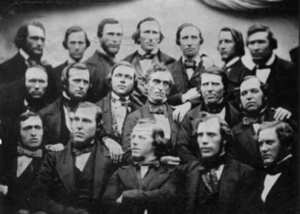
This 1855 photo is of the group of returning missionaries from the British Mission who would be asked to lead the first handcart companies west.
The arrival of the Thornton in New York made the newspapers. “They are mostly families,” the article noted. “And they appear to belong to the better class of emigrants.” The articles credited James Willie and the other elders for their leadership in keeping the passengers “clean, orderly and pious”.
In writing of the births at sea the article said “That only accident that happened was the three births aforesaid, and this the Elders state resulted from causes above and beyond their control”16Millennial Star, 11 August 1855 .
The Willie Company did not have a simple 1200-mile train ride to Iowa City. It would take them longer to get there than the emigrants from the S. Curling, who were able to take a more direct route.
The Willie Company would take 11-days to get to Iowa by rail, steamboat and ferry. The train experience was less than ideal. There were no sleeping accommodations and no sanitary facilities. The trains ran at a top speed of 20 miles an hour and were frequently off schedule.
They traveled across New York state to Dunkirk, a small town southwest of Buffalo. They then traveled across Lake Erie before getting to Toledo, Ohio. There they found nothing but chaos and inconvenience due to railroad officials who did not know how to handle all of them together.
The company traveled across Ohio, then Indiana and into Chicago where they again found rough treatment by the railroad. The conductor just left them on the street for the night. It took them a while to find help getting bedded down in a local warehouse for the night.
The company was too large to go in one group across Illinois, so they were split into two trains. A broken down bridge delayed them another day, forcing all to sleep on the train.
They arrived at 11pm at night in Rock Island, a town 50 miles north of Nauvoo. The next day they had to catch another train to take them the final leg to Iowa City.
Imagine how exhausting such a journey was for Sophie and her four children. Little did they know the trip ahead would test them to the very core.
By the time Sophie and her family arrived in Iowa City the Findleys had already been pulling a handcart with the McArthur Company for two weeks across Iowa.
Two weeks was about the time Brigham Young felt was required for the pioneers to adapt to the new physical realities.
“After they get accustomed to it they will travel 20, 25 and even 30 miles with all ease, and no danger of giving out, but will continue to get stronger and stronger;” Brigham predicted. “The little ones and sick, if there are any, can be carried on the carts, but there will be none sick in a little time after they get started.17Millennial Star, 22 December 1855 ”
The march across Iowa is thought by some to have been a fairly easy run for the pioneers. Nothing could be further from the truth.
From the extreme Midwestern humidity and heat, which none of the European natives were used to, to the constant barrage of criticism and bullying from locals the trek across Iowa was not easy at all.
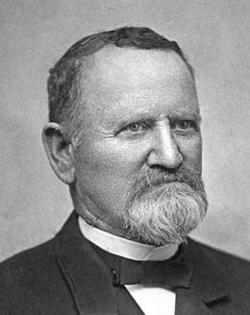
Captain Daniel D. McArthur, in a photo years after leading the company that brought the Findley family to Zion. He was called Capt. Dan on the trek.
Several days after Ellsworth’s company left, McArthur’s company left on July 24.
They numbered about 220 people (mostly Scots, a few Germans, and 30 children). There were 44 handcarts, 2 wagons, 12 yoke of oxen, 5 beef cattle, and 12 cows. Each person was allotted 55 pounds of flour.
The supplies included rice, 550 pounds of sugar, 400 pounds of dried apples, 125 pounds of tea, 200 pounds of salt, and 12 tents. The food was supposed to last them 60 days; then they would be re-supplied from Salt Lake City.
The obstacles to overcome in those first few weeks and 300 miles or so to Florence were many.
One of the things found most troublesome were the handcarts themselves. They were made in haste and they were untested. They broke down continually.
A forgotten detail was lubrication for the axles. Without a plan for that the pioneers used their bacon, which they could scarcely afford to part with.
Their diet heavily relied on flour and, during their early part of the journey in Iowa, what they could acquire through trade or by hunting.
Because there were so many of them and because local residents had to feed themselves what the company organizers thought would be available to them actually was not.
With each passing mile the importance of the Florence stop grew.
When they arrived at Florence – a place formerly known as Winter Quarters for pioneers escaping Nauvoo in 1847 and 1848 – they found well-ordered buildings and corrals designed to help them fix handcarts and get back on the road quickly.
What they did not find were many sources to replenish needed food stores. But at least flour had been stockpiled.
For a small company such as the McArthur Company that included the Findleys this was fortunate. After all, the Ellsworth and McArthur companies were the first two handcart companies ever. They received the first preparations on hand.
Unfortunately for the companies coming behind them the stockpiles would not be so great.
For the Willie Handcart Company that would prove disastrous.
The legend of the Willie Handcart Company was that they were still on the trail in October when winter weather caught them unprepared. That’s true – but it was not because they lagged.
The truth of the matter is that they got out of Iowa City faster and arrived in Florence, Nebraska sooner than other handcart companies. That is something of an accomplishment if only because they were a much larger company.
They left with 500 people, 120 handcarts, 25 tents, 5 supply wagons, 24 oxen, 5 mules and 45 cows (for beef and milk).
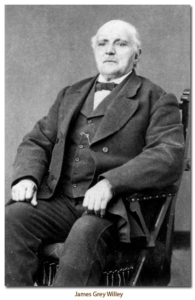
James G. Willie would receive a lot of criticism for his leadership of the handcart pioneers. Time would vindicate him for many of his decisions. As it was, he suffered the rest of his life with physical disabilities due to the trek experience. Ironically he would in later life, around the time this photo was taken, become Bishop of the Mendon Ward, where Ann Westover would serve as his Primary President.
The larger group likely caused greater social challenges as well. In the first few days the company saw many turn back or give up.
Company Captain Millen Atwood said: “The Saints found…a wide difference between singing about going to Zion, and actually going. You would have almost thought they would take wings and fly like doves…but when they really got into the work, the tune was a little different; but the great majority stuck to it.18Deseret News, 26 Nov 1856”
Part of the problem right off the bat was the shortage of flour. The trek plan was for consumption levels of about a pound of flour per person per day. That would provide only about 1600 calories of a diet requiring 4000 calories each day. Clearly the diet needed to be supplemented with plenty of other food.
Members of the Willie Handcart Company were given 10 ounces of flour daily for the trek across Iowa. Clearly organizers felt the companies could get greater amounts of food across populous Iowa .
Levi Savage was succinct in his evaluation of the rations: “It is not enough”19Levi Savage Journal, 24 July 1856 .
The handcarts for the Willie Company were more troublesome, too. They just were not ready when they arrived in Iowa City and the unskilled labor of the company was enlisted to help build the handcarts with all-green lumber. The carts just fell apart across Iowa and had to be repaired in Florence.
How well Sophie and her children endured these early challenges is not really known. As part of a group of approximately 90 other Danish saints little is actually recorded of their part of the experience.
The group had their own captain, John Ahmanson, and he likely organized the Danes in groups of ten, as other captains had done. Special provisions were made for widows and single mothers.
Nevertheless there was at times harshness in the rules of the camp. Sophie had packed a large umbrella and used it for her children under the hot Iowa sun. Captain Ahmanson saw it and just took it – breaking it over his knee before tossing it to the side of the trail.
Sophie’s history speaks of other rules broken for the sake of her children. At one point she traded her jewelry to some Indians in exchange for venison. She hid the meat in her blouse to feed her children along the way20Sophie’s History, FamilySearch.org .
Life on the trail could be tedious.
Records kept by pioneers included what details they could put down on paper. The time they left, the day’s weather and the food they ate.
Daniel Duncan was such a journal writer. He noted that on July 25th the McArthur Company departed at 7:15 am, traveled 19 miles and stopped to camp on the banks of the North Coon River at 4:30 pm, the weather being cool and mild. Then he added this:
“In the evening Captn Mc Arthur Called a Meeting for the purpose of giving the Saints an opportunity of expressing their sentiments relative to how they felt since they Started from Iowa. a good number of the brethren embraced the chance and spoke favourably of the blessings of the Lord which had attended them on their journy and felt highly satisfied with their leader whom the Lord had placed there for their directions, and was perfectaly satisfied that better leaders could not be given them… ”21Daniel Duncan Journal, 25 July 1856
The record illustrates the reason why the first two companies and Captain McArthur in particular were praised so highly after their journey was through. The camp saw little in contention and exhibited a united spirit across the miles.
Years later, looking back on the journey, Ann Findley Westover reflected on her handcart trek as merely one summer in her life – hardly memorable compared to things that happened to her after she arrived in Utah.
By contrast, the Willie Company had to endure complaints and criticism. It was a problem that Captain Willie struggled to control.
Arriving in Florence meant the Willie Handcart Company had one last chance to outfit for the long haul. But in looking around what was left of the former Winter Quarters it was plain to many they could not stay there.
The facts of what was there for them versus the prospects of what awaited on the trail were openly discussed. Captain Willie took a positive approach, preaching faith that they would be provided for on their way.
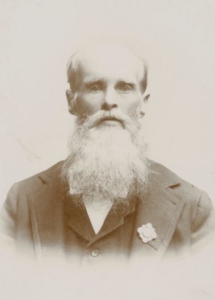
Levi Savage in later years. Despite the accusations of faithlessness levied against him by Franklin D. Richards and others Levi Savage never complained or protested. He was a humble servant to the end who remained above criticizing church leadership.
Fortunately, we have not only Savage’s contemporary account of what he felt and said but it is supported by other journals written at the time. He did not hold back.
Savage testified that the company did not know what was ahead of them. In Savage’s view they were too ill prepared to move forward another step and that if they did their “bodies would be strewn along the way”.
About of quarter of the company was Danish, led by John Ahmanson. He recorded what happened in response to Savage’s testimony:
“Since we were still a thousand miles away, many who were acquainted with the climatic conditions of the region were of the opinion that we ought to winter in Florence. But the oldest son of the prophet H. E. Kimball then rode into camp and delivered a speech in which he sternly rebuked those of little faith, and he promised that he would “stuff into his mouth all the snow they would ever get to see on their journey to the valleys!” With this of course every doubt had to vanish altogether. Captain Willie also stated that he would continue the trip until he received orders from Brigham Young to desist .”22John Ahmanson Journal, translated by Gleason L Archer (1984)
For Sophie the prospect of not moving forward had to be a tough one to contemplate.
Only months before she had a home and a warm place for her children. In Florence she had only the cover of her handcart and she was completely broke.
While Sophie had sufficient funds from the sale of property in Denmark to get her to Zion and perhaps even enough to start over once they got there, she had paid her way and then put her money in the hands of two missionaries for safekeeping.
She never saw it again.
Whether that money was stolen or used as money was from other wealthy pioneers to pay for the passage and outfitting of others we may never know.
But for that moment of time for most there was simply no going back and no standing still. They voted to press on, despite the lateness of the season.
Savage’s opinion and testimony was not appreciated. He was almost instantly called to repentance for it. He was accused of lacking faith. He did not, however, back down.
He said, “What I have said I know to be true; but seeing you are to go forward, I will go with you, will help all I can, will work with you, will rest with you, and if necessary, will die with you. May God in his mercy bless and preserve us.”
In the end, Savage was proven correct.
No other doctrine of the Church of Jesus Christ comes with greater controversy, passion and misunderstanding than the practice of plural marriage.
It dates back to 1831 and a very slow emergence of the practice from then to the time of the martyrdom in 1844.
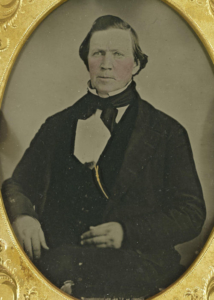
Brigham Young in about 1855. He was well acquainted with Charles Westover, Edwin Westover and Albert Smith.
It is important to note that because the practice was received by revelation from the Prophet Joseph the Saints considered it a righteous command and a privilege to practice.
Of course there was some resistance, as many historians note, due to the Victorian practices of the time and traditions nearly all members of the Church who grew up with in other faiths.
But they had left the mobs of Missouri and Illinois precisely to practice their beliefs and if their prophet Brigham Young endorsed and promoted the practice as a matter of faith by revelation it was their duty to practice it as well.
That was why they had come to the valleys of the mountains – to practice their religion.
There were other practical reasons to adopt plural marriage as well. Simply put, there were simply more women than men in the Church. With pioneer living demanding strong unions and families, and having a spiritual mandate as well that marriage between a man and a woman was divinely instituted, marriage was well sought after.
On Sunday, August 29, 1852, Elder Orson Pratt publicly discussed and defended the practice of plural marriage in the Church.
After examining the biblical precedents (Abraham, Jacob, David, and others), Elder Pratt argued that the Church, as heir of the keys required anciently for plural marriages to be sanctioned by God, was required to perform such marriages as part of the restoration.
He offered reasons for the practice and discussed several possible benefits (see JD 1:53-66), a precedent followed later by others.
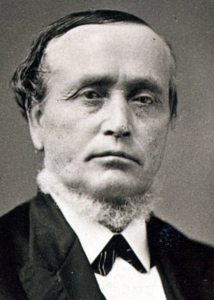
Apostle Erastus Snow seemed to be everywhere in the 1850s. He was particularly close to Charles Westover but was also very familiar with Edwin, & Ann Westover, Samuel Barnhurst, Albert Smith and, of course, the entire Snow family in Manti.
Obedience was a theme preached and contemplated widely during the critical year of 1856.
As the coming months would attest both Church authorities and members were looking to greater faithfulness as a way to overcome their afflictions of drought and famine.
Charles Westover, brother to Edwin Westover, was at that time both a husband and a father.
He had also spent years in the employ of Apostle Erastus Snow and was his good friend. Charles ran Snow’s temporal affairs, managing his farm and properties while the Apostle traveled on his many missions.
Ironically, it was Erastus Snow who had authority over the early missionary work in Denmark and was instrumental in the efforts to build the Kingdom in that country.
By 1856 Charles and Edwin had moved to Big Cottonwood, a rural area southeast of Salt Lake City that constituted their “country farm”. While they struggled as all other farmers did with the fight against crickets and drought they did find success working together on their combined properties. Each was active in the Church and pursued spiritual education in the School of the Prophets.
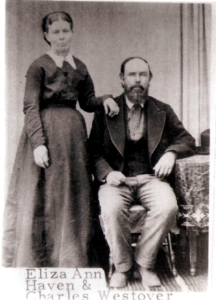
Charles, shown here with wife Eliza Ann Haven Westover, was a Church leader in Southern Utah most of his life.
Upon his deathbed Jerome made Mary promise that she could marry another as long as she was sealed to Jerome and that any children that would be raised would be sealed to him. This was not an unheard of practice during these days in the Church.
On September 1, 1856 Charles was wed to Mary Shumway, married by Brigham Young in his office.
He would be the first of the Westovers to engage in plural marriage. Perhaps it would be his experience that would lead to others soon engage in it as well.
The Ellsworth and McArthur Company were later in their route than they wanted to be. However, things had otherwise moved along pretty much to plan.
Both companies cheerfully competed against each other in pressing forward, both wanting to become the historic first handcart company to reach the valley.
On September 2 they met the first supply wagons sent from Salt Lake, as planned.
Two days later at Deer Creek (present-day Glenrock, Wyoming), they obtained more flour from five supply wagons. On that same day, 4 September they reached the Upper Crossing of the Platte, which they forded.
The next day they stayed in camp because it had rained so much; snow covered the surrounding mountains.
With plucky determination, they tried to keep up with or pass their friendly rivals in the Ellsworth company.
Twice they covered more than 30 miles in a single day to catch up with Ellsworth. After traveling nearly night and day, on September 11 at almost 11:00 p.m. they pulled into camp beside Ellsworth’s company on present-day Alkali Creek on the Seminoe Cutoff.
This cutoff was an alternate route that tracked south of Rocky Ridge, bypassing it and four crossings of the Sweetwater. Ellsworth had taken this cutoff in 1854 when traveling to serve a mission in England. These two handcart companies were the first westbound Mormon emigrant groups to take the Seminoe Cutoff.
If the trailing handcart companies had known of and used the cutoff they likely could have saved some lives and shaved a great deal of time off their trek.
Their good speed in September cheered all who worked so hard to move forward. For the Findleys it meant getting that much closer to a sweet family reunion.
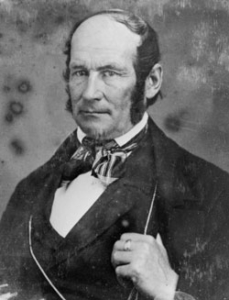
Heber C. Kimball is the prophet, seer and revelator Sophie met in a meeting after arriving in Utah. She was promised she would shake hands with a prophet. He did not speak Danish and Sophie did not speak English. But they reportedly understood each other when they met.
In late summer of 1856, after it was clear to Church leadership that the two-year famine would continue, an effort was made to address why it was happening. Some General Authorities felt that Church members had fallen spiritually asleep, becoming more enamored of materialism and the other trappings of Babylon than of building the kingdom.
Brigham in particular felt it was time for Church leadership “to put away their velvet lips & smooth things & preach sermons like pitch forks tines downwards that the people might wake up.”
It was a time of repentance and a time to recommit to serving the Lord. In a mid-September meeting President Heber C. Kimball, said: “…If you do not repent and lay aside your wickedness you will go to hell. I tell you that there is nothing that will turn away the wrath of God and the chastenings that are to come on this people, if they do not repent, indeed; now mark my words. There has been too much said here, by Brother Brigham and his brethren, to fall to the ground unnoticed, and you must observe every word of it”24The Mormon Reformation of 1856-1857, Howard Clair Searle, 1956.
Included in the fervor of reformation was the well-practiced rite of re-baptism25The Mormon Reformation of 1856-1857, Howard Clair Searle, 1956, page 67 . This ordinance was conducted by Brigham Young and the Twelve in 1847 and was seen occasionally in the years thereafter in Utah. But no other period of time saw it practiced more than in 1856 and 1857.
Electa Beal Westover, mother of Edwin and Charles, in on record as having received the ordinance. In fact, most of Utah Territory who were members of the Church responded to the call.
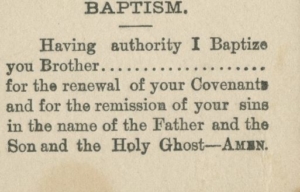
An ordinance card with the baptismal prayer dating from the 1850s. Photo courtesy of the Church History Library.
“Having been commissioned by Jesus Christ I baptize you for the renewal of your covenant and remission of your sins.”
The word “covenant” is one highly regarded in Mormon culture. Underlying everything the members of the family were doing in 1856 was by covenant.
Brigham Young told the Saints: “All the sacrifice that the Lord asks of his people is strict obedience to our own covenants that we have made with our God, and that is to serve him with an undivided heart.”
The “undivided heart” was a theme woven deeply in 1856 for all of our family spoken of here.
For the Findley family it was underscored by reunion. For Sophie it was in the promise that she would make it to Zion.
But the “undivided heart” would mean more and last longer for one person in particular: Albert Smith.
Albert Smith and his wife Esther were original settlers in Manti, Utah. It was in their home where the community first held theatrical productions, an effort brought forward by Esther.
The Smith family history was rich with religious tradition. Albert’s family in New England was among the founders of the Baptist faith in that region.
The details of Albert and Esther’s conversion to Mormonism are largely lost. They joined the Church in the mid-1830s and by the 1840s were with the Church in Nauvoo.
In Nauvoo Albert was called on a mission back to New York in 1842 and that is when the trouble for Esther began.
These were treacherous times in Nauvoo.
The mayor of Nauvoo was John C. Bennett. He was a physician and an ambitious politician. Nauvoo was at that time the largest city in Illinois and it provided a fertile ground for anyone eyeing a future in politics.
Bennett wrote letters to Joseph Smith asking to join the Mormon movement and due to his connections and skills was enlisted to help obtain the Nauvoo city charter.
Before long but after entrenching himself in Nauvoo social and political life the true intentions of John C. Bennett were exposed after word of several illicit affairs with women in the city came to light.
Bennett was exploiting a rumored doctrine Joseph Smith had received by revelation known as plural marriage.
Bennett, with a band of about seven other individuals, began promoting “spiritual wifery” to women of Nauvoo, targeting especially the wives of men away on missions for the Church.
Esther got caught up in this deception.
Over the course of weeks and months in 1842 she was pursued by a man named Gustavus Hills, one of Bennett’s adherents. Desperate for help, Esther took the details of her situation to Emma Smith, who then shared them with Joseph.
Esther would later testify in city council proceedings against John C. Bennett how she was pursued.
Like other women, Esther was devastated by the experience. She feared for her marriage to Albert and her eternal salvation. The guilt was more than she could bear.
As Joseph did with other women, he offered to seal Esther to himself under the “doctrine of adoption”, thus assuring herself of better standing in the afterlife. Only after this happened did Esther feel that she could continue living.
It would take years before she could confess her involvement to Albert.
He returned in late 1843 and helped to complete the Nauvoo temple. In 1844, Albert and Esther had their 4th child, a son they named Joseph Albert Smith. Some modern day critics of the Church point to this as proof of Joseph Smith’s practicing of polygamy.
But there is nothing of the record to suggest that Esther and Joseph were ever conventionally married or lived together. It has been suggested that naming the baby Joseph Albert Smith was some kind of confession. But the dates of the baby’s birth align with Albert’s return to Nauvoo and never was the suggestion ever made in the family that Joseph Albert was anyone else’s child other than Albert’s.
Still, it took a while before Esther could tell Albert about what happened.
It was only after they had passed through the trials of the expulsion from Nauvoo and the year-long absence of the Mormon Battalion experience that Albert finally learned what Esther had gone through.
He was devastated.
For Esther, it remained a burden for the rest of her life.
Albert’s journal gives little detail: “She was confined to her bed for a long time. She recovered so to be about but I think she did not enjoy good health after. In the lst of Aug., I think it was, she was taken down and confined to her bed from which she did not recover.26Albert Smith Journal, September 1856”
Esther’s death was the last thing Albert needed in 1856. He still had children at home. Joseph Albert was just 11. His little sister Esther was only 7.
But it was his eldest son Azariah who proved to be the greatest challenge.
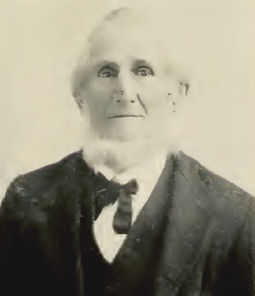
Albert’s oldest child, Azariah Smith, has a colorful history of his own. He is celebrated as one of the discoverers of gold at Sutter’s Mill in California in 1849. He stopped to work there on his way back home after service with Albert in the Mormon Battalion.
The injury was so severe it would give him epileptic seizures that would make him difficult to be around.
In fact, Azariah’s wife ended up leaving him and taking two of Albert’s grandchildren with her. She left the care of Azariah to his father.
Albert had nobody now to help him with his family. Given the situation on the farm losing Esther became an all-out crisis.
Albert needed to act quickly.
The first and second handcart companies traveled very closely together all across the plains and arrived in Great Salt Lake City together on September 26, 1856.
President Brigham Young and Heber C. Kimball “escorted by the minute men and a company of Lancers,” and followed by general citizens who walked or took horse-drawn vehicles, met them as they neared the city.
The Nauvoo Brass Band and Capt. Ballo’s band heralded the handcart travelers’ arrival. Charles M. Treseder described the first carts rolling into the city: “folks came running from every quarter to get a glimpse of the long-looked-for hand-carts.”
Treseder later wrote: “I shall never forget the feeling that ran through my whole system as I caught the first sight of them. The first hand-cart was drawn by a man and his wife, they had a little flag on it, on which were the words: ‘Our President—may the unity of the Saints ever show the wisdom of his counsels.’”
The Findleys quickly found family. William and Sarah were summoned from Big Cottonwood, where they resided near the Westover families.
There they would make their temporary home.
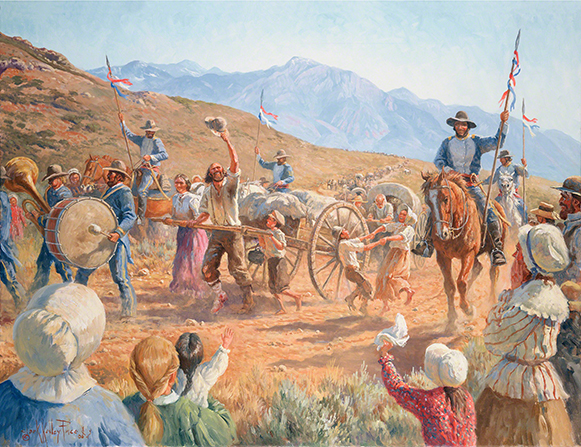
The first handcart companies arrived with a lot of fanfare in Salt Lake. The Findleys were part of this celebration
The long trek across Nebraska was eventful to the Willie Company.
In early September the company awoke to missing nearly 30 head of cattle. Levi Savage recorded in his journal: “Some time last night, 30 of our best working cattle left us. We had a guard around them, but no one knows when or where they went.27Levi Savage Journal, 3 September 1856 ”
It was only a day before that Savage had recorded in his journal about buffalo stampedes and how common they were in Utah.
On the night of September 3rd, a pioneer by the name of Emma James recorded this:
“As the sun went down, a terrible storm came up. A strong wind tore the tents out of our hands and sent everything flying in all directions. The thunder and lightning was like nothing we had ever seen before. We had all we could do to keep track of each other. The noise terrified the children so that they ran for any shelter they could find. Soon we all did, for the rain came down in torrents, and in a matter of minutes we were soaked to the skin.28Journey to Zion, page 626 ”
Perhaps this is the date of a stampede mentioned in one of Sophie’s histories.
A buffalo stampede is a dangerous thing to be around. Given the weather there is no doubt why the company’s cattle were spooked. But the cost to the company was incalculable.
They spent three days searching for the cattle. The Company just could not afford to go on without them. They were needed not only for food but also for labor. Only 12 oxen remained to pull the supply wagon and with a weight of nearly 3000 pounds per wagon they just could not move forward.
The supplies had to be redistributed to all the handcarts.
Willie Handcart pioneer Ann Rowley summed it up best: “This was the beginning of our great hardships and probably was the cause of most of them, for we spent valuable time looking for the oxen. This loss in turn reduced our meat supply, and because there weren’t enough cattle to pull the supply wagons, a hundred pounds of flour was placed in each handcart. Our handcarts were not designed for such heavy loads and were constantly breaking down.29Autobiography of Ann Jewell Rowley, page 244 ”
Anyone who drives Interstate 80 in modern day Wyoming knows how far it is to Laramie from Utah. The wind in Wyoming is unrelenting and the weather is hostile during nearly all seasons.
To think of the Willie Handcart Company headed west and only as far as Laramie at that late of date is, to even the modern traveler, a dreadful thought.
But the reality is they had covered 522 miles since leaving Florence. They were halfway there – and practically staring winter in the face.
It was not a pleasant thought to Captain Willie in 1856 either.
Fort Laramie was thought of as the final post on the long journey ahead – a last chance to get repaired and replenished. But as with Florence, there just was not much there for them.
The predicament of the company was not lost on anyone. Clearly there would not be enough food to go the distance. Frankly speaking, the Willie company could not move backwards or forwards and they could not stay where they were.
There was some grumbling and also some criticism in the company. Tensions ran high with the leadership.
About a week later President Franklin D. Richards, returning home from his mission in Europe, caught up with the Willie Company. After hearing of the dissention he laid into Levi Savage, completely blind siding him.
He wrote, “A meeting of the Saints was called…Brother Richards commenced to speak, and I soon perceived that the meeting was called in consequence of the wrong impression made by my expressing myself freely at Florence, concerning our crossing the plains so late in the season. The impression left was that I condemned the handcart system, which is wrong. I never conveyed such an idea, nor felt to do so.30Levi Savage Journal, 13 September 1856 ”
Not much is known of what Levi Savage said in response to this rebuke. His journal makes no note of it.
In the end, it didn’t matter. Franklin Richards was going to hear something completely different when he face Brigham Young just a few weeks later.
Perhaps President Richards could see the tragedy unfolding. As he pressed forward with his carriage towards Salt Lake City he ran into three different re-supply teams that had been sent from Utah for those companies still on the trail.
All three of them failed to reach the Willie Handcart Company, stopping well short of them.
Captain Willie had no choice. Shortly after leaving Fort Laramie he called a meeting and broke the bad news. Rations would need to be cut to ¾ a pound per person per day – and they would need to pick up the pace. As it was, these efforts would only see their food supply last for 350 miles. They had more than 500 miles yet to go.
When Franklin D. Richard’s express carriage arrived in Salt Lake City on October 4th he went straight to Brigham Young’s office.
When Brigham learned that more than 1300 pioneers were still out on the plains he was horrified.
“We had no idea there were any more companies upon the Plains, until our Brethren arrived.” he wrote to Orson Pratt later that same month. Brigham thought that those same leaders “would consider their late arrival in America and not start them across the Plains until another year 31”.
Brigham did not have to think long about the situation. The Church was in General Conference that weekend and in the morning Brigham addressed them. “I will now give this people the subject and the text for the Elders who may speak [next],” he said. “It is this. On the 5th day of October, 1856, many of our brethren and sisters are on the plains with handcarts…and they must be brought here, we must send assistance to them. The text will be, “to get them here”. I want the Brethren who speak to understand that their text is the people on the plains, and the subject matter for this community is to send for them and bring them in before winter sets in. That is my religion; that is the dictation of the Holy Ghost that I possess.31Deseret News, 15 October 1856 ”
From there at the pulpit Brigham began issuing orders. He asked for so many wagons, so many men, such and such supplies – right then and there.
The response was immediate. Men began to rise from there seats in the Bowery to gather supplies and prepare teams.
Brigham instructed the women to gather blankets, skirts, stockings, shoes and socks – whatever needful thing they could think of. Women stood up right there in the congregation and took off what they could to donate.
Over the course of just a day or two a great deal of material, teams, wagons and men were gathered and dispatched. The cost to an already starving community was staggering. But Brigham knew the handcart companies were still weeks away and if they were to survive they would require all the Church could send their way.
Brigham knew these were mostly poor Saints who would arrive with nothing and would require great assistance over the winter months ahead.
That was true more for Sophie Petersen and her children than just about anyone.
The days were growing cooler and the nights now dropped below freezing, affecting both the handcart companies and the rescue teams.
The first rescue teams covered 113 miles in about six days, having arrived at Fort Bridger. The handcart companies were nowhere in sight. The Willie Handcart Company was the closest to them, about 160 miles east, near Independence Rock.
Not knowing when or if any rescue teams were coming, Captain Willie felt he had no choice but to cut rations of flour again. Men would receive 10 ounces of flour a day, women 9 ounces and children 3 to 6 ounces depending on their age. For adults this would be the equivalent of 6 or 7 slices of bread a day.
They were running a 3000 calorie deficit now.
Levi Savage saw the effects of it all. “The people are getting weak, and failing very fast, a great many sick. Our teams are also failing fast, and it requires great exertion to make any progress.32Levi Savage Journal, 15 October 1856 ”
Death was an ever recurring reality for the Willie Handcart Company now. The lack of food, the now-regular crossings of the Sweetwater River, and the daily grind of moving forward were all making the go difficult and slow. It took them four days to just make 44 miles from Independence Rock.
They were now down to just one day’s supply of food with 56 miles yet to go to South Pass, where they hoped for re-supply.
The Continental Divide loomed it front of them. It was going to be all up hill.
“…I married Roddy Gifford, that to a gentile may look strange but twas contemplated before my wife died. To a Gentile it probably 1ooks strange yet our faith is to well understood to need any explaining. This fall and winter there was a revival of religion or in other words, the saints saw that they were not living their religion as they should. They confessed their sins and repented of them and drew nearer to God and was blessed in abundance.33Albert Smith Journal, 17 October 1856 ”
With the union Albert’s life began a new chapter. His home was certainly more full.
In all, he now had 9 mouths to feed.
It was a Sunday but no day of rest for the Willie Handcart Company. Skies were low and gray – snow would soon be upon them.
The weather would affect them all. For the rescuers the snow was already falling and slowing them down. The rescue team was split between two groups – the express rescue team and the better supplied but slower moving rescue team. Given the conditions George Grant, captain of the rescue effort, decided to establish a relief station some three miles from South Pass – and then charge ahead with as many as he could take with him to meet the Willie Handcart Company.
After handing out the last of their rations the handcart company knew they had to make at least 16 miles that day to the Sixth Crossing of the Sweetwater. By midday the storm was upon them – snow piling up deep and headwinds of chilling cold.
Most could remember that night well even decades later. Due to their weakened condition, the weather, and the lack of food most did not complete the 16-mile push into camp until after dark.
William Woodward wrote in his journal: “A snow fell on us that night about a foot deep. It was a sorry sight, over 400 people with handcarts, short of bedding, and to sleep on the cold ground. One though is enough for a lifetime.34Woodward letter, 1856 ”
In the morning they awoke to about a foot of snow – and several were dead. It was everything they could do to get them buried.
All the commissary had left to distribute were a few pounds of sugar, some dried apples, a partial sack of rice and some leftover hard bread Captain Willie had traded for at Fort Laramie.
Two ill and “skin-and-bone” cattle were butchered…and that was it. There was nothing left until the relief supplies arrived.
Desperate at the conditions, Captain Willie decided it was not enough for the company to press forward, so he set out to find the rescuers. He took just one of the rescuers with him, hoping they could find some supplies to return with.
The diary of John Chislett, one of the captains of the company, picks up the story:
“The scanty allowance of hard bread and poor beef…was mostly consumed the first day by the hungry, ravenous, famished souls. We killed more cattle and issued the meat, but eating it without bread did not satisfy hunger, and to those who were suffering dysentery it did more harm than good. This terrible disease increased rapidly among us…and several died from it…Such craving hunger I never saw before, and may God in his mercy spare me the sight again.35Chislett “Narrative”, page 324 ”
While these sufferings went on Captain Willie and rescuer Joseph Elder fought the weather in trying to find the rescuers. The snow caused them to lose the trail and they pressed forward for hours, estimating their total travel, which included the first climb up Rocky Ridge, at a total of 27 miles on the day.
The rescuers were thinking the handcart company was coming to meet them. Given the weather conditions and the lateness of the day they put up a signboard on the main trail, hoping it would help the handcart company to find them.
That signboard worked. In fact, James Willie felt that without its discovery he and Elder would have perished that night. In thinking about it after, Willie shuddered to think how much further delayed the handcart company would be if not for that sign.
The next day, in deep snow, the rescuers who knew now how far they had to go and the way to get there, set out to meet up with the company.
Despite all they had been told the rescuers were not prepared for the sight they beheld when finally reaching the Willie Handcart Company.
Chislett recorded the details: “…several covered wagons, each drawn by four horses, were seen coming toward us. The news ran through camp like wildfire, and all who were able to leave their beds turned out en masse to see them. A few minutes brought them sufficiently near to reveal our faithful captain slightly in advance of the train. Shouts of joy rent the air; strong men wept till tears ran freely down their furrowed and sunburned cheeks…36Chislett “Narrative”, pages 325-326 ”
The rescue was timely because the biggest challenge the company faced was dead ahead of them – Rocky Ridge. Rising 700 feet in about two miles the climb up Rocky Ridge presented the crucial moment for the Willie Handcart Company.
It was another uphill climb, a day’s trek of more than 16 miles, and most would require 20 hours or more to complete it. Rescuer Joseph Elder described the scene: “That was an awful day. Many can never forget the scenes they witnessed that day. Men, women and children weakened down by cold and hunger, weeping, crying, and some even dying by the roadside. It was very late before we all got into camp. Oh, how my heart did quake and shudder at the awful scenes which surrounded me.37Ahmanson, “Secret History”, page 33 ”
The reminiscences of Rocky Ridge comprise the most recorded event of the Willie Handcart Company drama.
Yet we have no such record from Sophie Petersen. All we know comes from a brief mention in Albert’s journal later where he states “she had a hard time”.
We also know that shortly after making it to Salt Lake City Sophie suffered the removal of several toes due to frost bite. But she, along with all her children, survived it.
More than two weeks later the Willie Handcart Company was finally approaching the Salt Lake Valley.
Many people in Salt Lake had relatives stuck out on the plains. They were talking. They were complaining. They were critical of leadership that could allow such a tragedy to occur.
They were laying it at the door of Brigham Young. They blamed it all on two things: the late start to the trek and the concept of using handcarts to move so many people.
It was Heber C. Kimball who first addressed their concerns. He explained that the earlier arriving handcart companies had arrived safely, in good season and without the typical injuries and death seen in traditional wagon companies. He also explained that it was the emigration officials in London who did not follow Brigham’s directive about getting a late start.
Brigham himself took to the podium to defend himself. He very adamantly refused to accept responsibility. He said that “if only a bird had chirped it in the ears” of emigration officials – meaning Franklin D. Richards and Daniel Spencer – they would have known to never had left from Florence.
If only he had heard the story of Levi Savage.
Brigham said it was a lesson that faith is often not enough. Faith combined with good judgment is better.
The Willie Company reached Fort Bridger on November 2nd. A number of teams and wagons had finally assembled there that when the handcart company got there they were able to cast the handcarts aside. They rode the final 113 miles to Salt Lake in wagons.
Sophie arrived in Salt Lake City penniless, homeless, and unmarried. This time there were no parades or brass bands to meet the company. Over 74 people had died since leaving Liverpool. The condition of those who had survived was poor and the Bishops of Salt Lake City had already organized homes for each of them to immediately find warmth, food and medical attention.
Sophie and her children were one of those families taken in by the Bishop of a local ward. It is not known how long she remained in Salt Lake before facing her new future.
In all the histories and essays written of Mormon polygamy one solid fact gets consistently overlooked: more than 4000 thousand emigrants came to Utah in 1856. Many of them were single sisters. Some were widows with children. Many lost spouses along the way. Given the famine of the times plural marriage was a quick way to put such individuals in situations where they could survive.
Some critical minds sometimes try to look at 19th century marriage through a 21st century lens. In so doing they critcize everything from the plurality of wives to the age in which many women married. What they fail to look at are the realities of 19th century living. Conditions were harsh. Families were needed for survival. For generations dating back to the founding families of the country large families are what made life in the wilderness possible.
Ann Findley, even at the age of 18 in February 1857, was a candidate for marriage. Her family literally had nothing. Her brother was living in Cottonwood but was only a year removed from coming to the valley himself. He had not even built a house yet or developed a farm.Ann’s parents were approaching their 50s — and their plan was to help William and his family get settled somewhere.
With all of these new mouths to feed in the territory Church authorities added plural marriage to the list of things to get done during the Mormon Reformation. More plural marriages were performed in 1856-57 than any other time in Utah history.
Brigham Young, in one of his first addresses of the Mormon Reformation, took on the subject by proposing something no one expected:
“I wish my own women to understand that what I am going to say is for them as well as others and I want those who are here to tell their sisters, yes, all the women of this community and then write it back to the states and do as you please with it. I am going to give you from this time to the 6th a day of October next for reflection that you may determine whether you wish to stay with your husbands or not and then I am going to set every woman at liberty and say to them “now go your way”. My women with the rest, go your way, and my wives have got to do one of two things: either round up their shoulders to endure the afflictions of this world and live their religion, or they may leave, for I will not have them about me. I will go into heaven alone rather than have scratching and fighting around me. I will set all at liberty. What? First wife too? Yes, I will liberate you all. 38The Mormon Reformation of 1856-1857, Howard Clair Searle, 1956
Brigham’s comments caused a sensation. But he was the Prophet. He alone held the keys to either bind or loose things in heaven, according to the New Testament. He was not defending plural marriage to anyone. He was defining it as a relious way of living:
“Tell the gentiles that I will free every woman in this territory at our next conference. What the first wife, too?Yes there shall not be one held in bondage, all shall be set free and then let the father be the head of the family, the master of his own household, and let him treat them as an angel would treat them and let the wives and the children say amen to what he says…”
From that point foward plural marriage became a repeated theme in the conferences held in the Territory during the Mormon Reformation.
Edwin Westover, a member of the school of the prophets in Salt Lake City, no doubt heard plenty about it. He had already commited to Brigham through a letter of consecration to give his all to the Kingdom.
He took serious what Brigham said, “The only men who become Gods, even the Sons of God, are those who enter into polygamy. Others attain unto a glory and may even be permitted to come into the presence of the Father and the Son; but they cannot reign as kings in glory, because they had blessing offered unto them, and they refused to accept them.”
So too did Ann Findley take it seriously. He was 32. She was 18. They were sealed in the Endowment house and took up life together with the rest of Edwin’s family.
The sermons of plural marriage reached Manti in early February 1857. Sophie at this point had joined the Danish community that was so prolific in that area. But she was encouraged to marry quickly for the good of her family.
Albert might have needed a little more time. He had about two weeks to get his head around it.
Notes from conferences held in the Manti were very clear. The February 1, 1857 meeting minutes indicate that talks from the Stake presidency and the Bishopric on the plurality of wives dominated the meeting.
The meeting closed with Gardner Snow urging the High Priest Quorum to “do their duty or they would be dropped”39Manti Seventies Quorum and Ward Records, 1854-1857
Albert was already supporting Sophie and her family at this point. But based on these meetings he spoke through an interpreter to her and together they decided to join a group of people in going to Salt Lake to be sealed in the Endowment House.
The plural marriage arrangement between Albert Smith and Sophie Petersen actually became a sweet love story in time – a union that lasted for 35 years and one that went far into their later years with a focus and devotion for temple work.
As Sophie joined Albert’s family in 1857 there was trouble almost immediately with Albert’s other new wife, Rhoda Gifford.
“Let me state here that by me marrying two poor widows one with 3 and the other with 4 children with my one it swelled my family to 14 in all. My Danish woman coming from Denmark herself and four small children and paying for there passage and paying dollars for fetching a large bundle or trunk and c. which she never got. She used all the means she had and when they came to my house they were all destitute. And my other wife was as completely destitute and Johnson’s army edges up the way so that there could now be goods of any kind be fetched to the territory from the states for two years. You may well ask how did your wives keep there children and the rest of you clothed decent and comfortable. As I had no sheep and could raise no flocks (I tried a number of times) I will tell you by patching and putting patch upon patch. Patch upon patch do you ask how they got those patches. I do not know, but I do know that they kept our clothes whole, neat and clean, and we never stayed from meetings nor from a party for want of decent clothes.”
But there was another problem complicating things.
Albert’s oldest son, Azariah, who served with him in the Mormon Battalion, suffered a severe brain injury when he was kicked in the head by a horse. The injury was so severe it would give him epileptic seizures that would make him difficult to be around. In fact, Azariah’s wife ended up leaving him and taking two of Albert’s grandchildren with her.
But Albert took Azariah in, despite how full his house already was.
“I could not leave him home for Rody my other wife was afraid of him as he had spells and hollowing.” Albert wrote.
Azariah’s condition caused a lot of concern for Albert. “About the time that his mother died there was a revival as it was called and as I previously stated some went crazy. He came very near it or he would have spells and start hollering and would strike any one that went near him. And my women folks became afraid of him and I was oblidged to take him with me wherever I went. Although some times when I was after wood and when I was going to the field he would be taken home, but those hollering spells gradually wore off and when he was well he was able to do a little. I bought some shoemakers tools and in the fall he would fix up our shoes not for profit but to occupy his mind and keep him from studying all the time, which I found to be very injurious. I might mention many things such as him smashing three of my doors and striking Sophiah in her face causing the blood to flow, striking the children and they being afraid of him and etc. I have not written this short sketch to attach any blame to him. Under the same circumstances perhaps I should do no better, but only to show that those things caused me a great (as well as my wife and family) deal of labor, care and anxiety and sorrow.”
In time, it was more than Rhoda Gifford could put up with.
“In 1865 Roddy expressed from time to time a wish to be divorced and this spring desiring the same I told her that if that was the desire of her heart that she should have her request and her saying that it was I took measures to bring it about.”
But to Sophie, Albert had different feelings.
“I feel it my duty in justice to say a word or two about my Danish wife for there has many things been said that should never have been told. When I married Sophiah, I had another woman and she (Sophiah) thought it the duty of my first womans place (Rody) to take care of him. (And so others thought) But almost as soon as she came she (Rody) threw him on Sophiah and although she thought in all justice it did not belong to her, yet for my sake and his sake, she saw no alternative only for her to round up her back and to do it. And from the first till he got over his fits and left she was a Mother to Azariah. She kept his clothes neat and clean and watched over him both by night and by day through fear that he might fall into the fire or go somewhere and get hurt.40Albert Smith Journal, 1865 ”
For the years chronicled in Albert’s journal there is a clear focus for both him and Sophie on the temple and acquiring family genealogy. Albert describes the temple’s progress and notes the changes in leadership as the year pass. In all of it there is a clear emphasis on Sophie and her direct involvement in nearly all matters. Later, once the temple was completed, they would be sealed together, with all their children.Despite their great story of love and devotion there is still one more chapter to be told of the character of Albert Smith and it relates to his deep love for his first wife, Esther.
During the trial of John C. Bennett in Nauvoo there sat a councilman who at that time was not a member of the Church. His name was Daniel H. Wells. In due course he joined the Church and became an apostle in 1877 and later was named president of the Manti temple upon its dedication.
Of course, Albert Smith was an institution in Manti, known among the members of the Church there as “Father Smith”. Albert was a founding father of Manti. His name is all over the meetings of the Seventies Quorum and in the Manti City records as a regular speaker at town events. There was no way Daniel H. Wells could not have known all about Albert Smith. There is no doubt that Albert took this issue directly to President Wells.
Shortly after the dedication of the temple, President Wells in 1888 wrote a letter to Joseph F. Smith, his friend and fellow apostle:“I write to you now however in regard to a matter of business, a brother Albert Smith, who with his son Azariah Smith were in the Mormon Battalion, and are now living here in Manti, desires to be adopted into the family of Father Joseph Smith the Patriarch. As there was no one here representing your family I told him that I would write to you in relation to this matter.
Brother Smith is quite aged and feeble, but an old and staunch member, and was acquainted with the Patriarch, and has a large genealogy. Some 400 or 500 names on his list, I believe, and is now with his son engaged in getting the baptized and endowed. I trust that you will arrange for this adoption as it is a matter that has lain near his heart and will give him much joy. He is also much afflicted with the loss of his first wife. It seems that she was sealed to Joseph the Prophet in the days of Nauvoo, though she still remained his wife and afterward nearly broke his heart by telling him of it and expressing her intention of adhering to that relationship. He however got to feeling better over it and, acting for Joseph, had her sealed to him and to himself for time.41Daniel H. Wells letter to Joseph F. Smith, 25 June 1888, courtesy of the Church History Library, The Church of Jesus Christ of Latter-day Saints”
This letter is now in the family archives here on this site.
Part of the letter is redacted. In speaking with the Church History Library about that I was informed that enough interest in the letter has been generated by critics of Joseph Smith and polygamy they felt they needed to remove a portion of it for the sake of Esther’s privacy. They were kind enough to read that portion to me.
In it President Wells explains that Albert was aware of the full nature of Esther’s experience in Nauvoo. He had forgiven her and felt that “as a good person” she deserved to be free of the burden and guilt she carried for the last years of her life. He just wanted to fulfill her wishes and see that she was happy on the other side.
Albert and Sophie — as well as Azariah and his family — worked hard to complete ordinance work for as many family members as they could account for. Albert’s journal over the last several years records an almost exclusive record of temple activity.
It was an all new reality in 1857 for the family members mentioned here. Their lives had changed forver.
I would note that we would be missing a lot if we did not explore the years of the rest of their lives in detail as we have here. As usual, I lament the fact that we do not have more information. Specifically, I would like to know how they felt and thought in their actual words.
But I believe we can learn a great deal from the details we have. They were not perfect people but they clearly were people who did the best they could. Their actions proved their convictions.
Albert Smith especially is an incredible man. A real man, as I recently shared with my wife. I would gladly hold him up to any good man in the Church, without reservation. He was exceptionally true, loyal and faithful.
But I would not leave any of the out in my admiration. I believe they were born for their time and rose to it magnificently.
Is 17 Miracles Accurate?
Yes and no. The film is beautifully shot, well scripted and very moving. It uses accurate journal entries and reflects well on personal accounts. However, the film combines events from several emigration events for the purposes of dramatization.

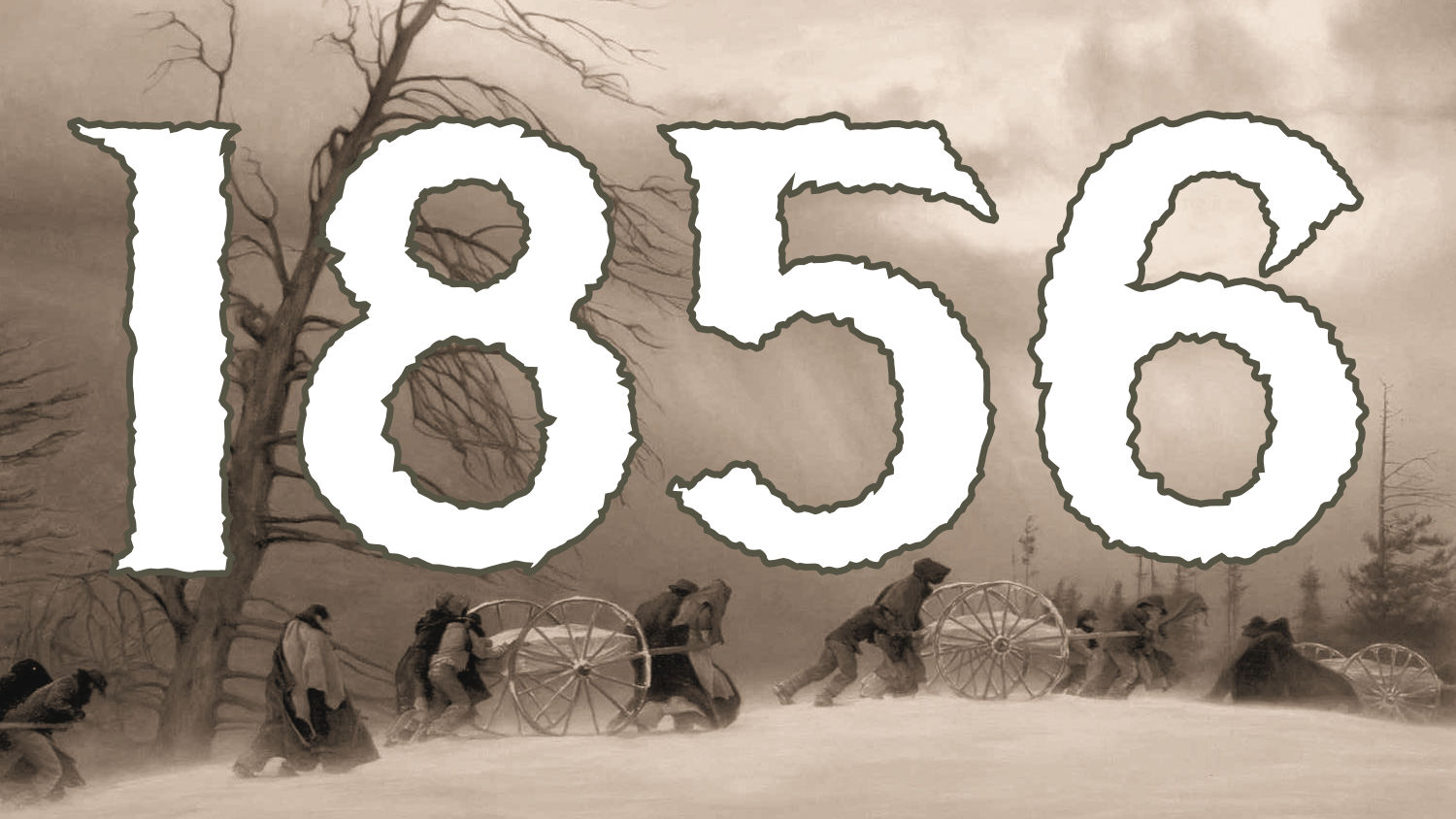
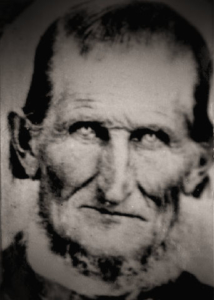
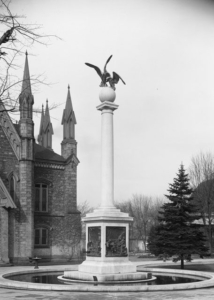
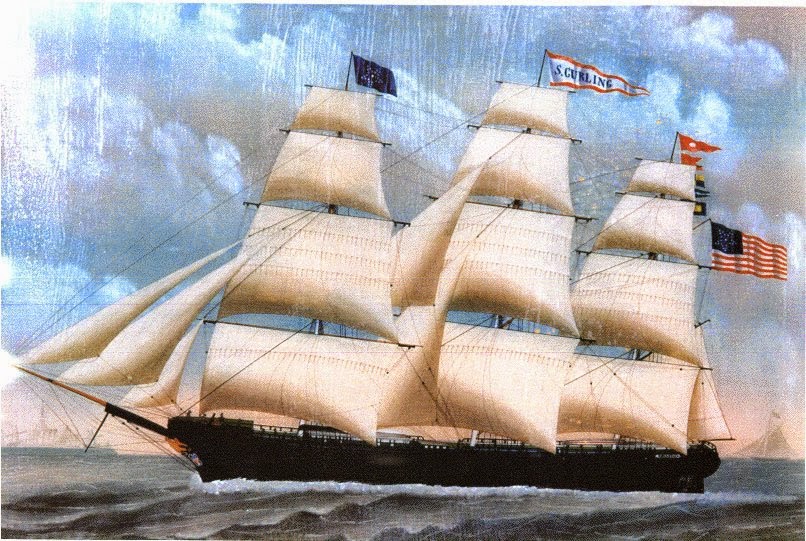
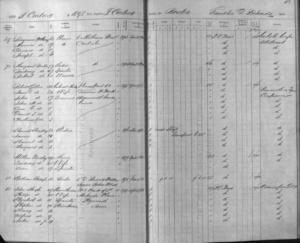
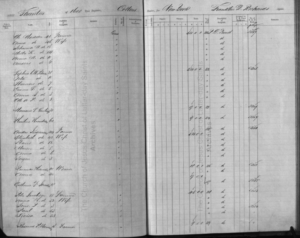
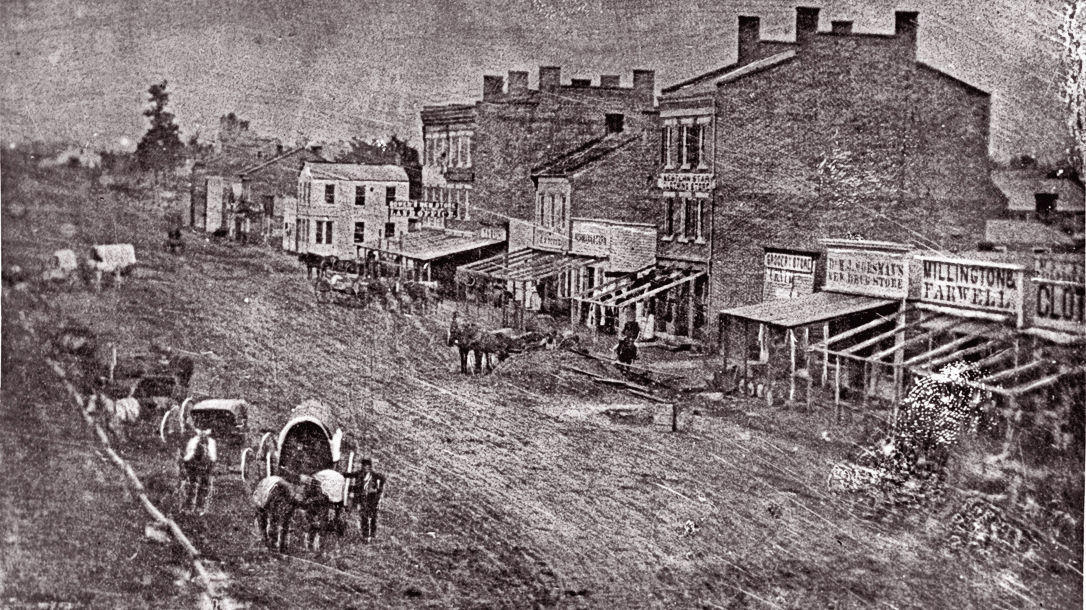
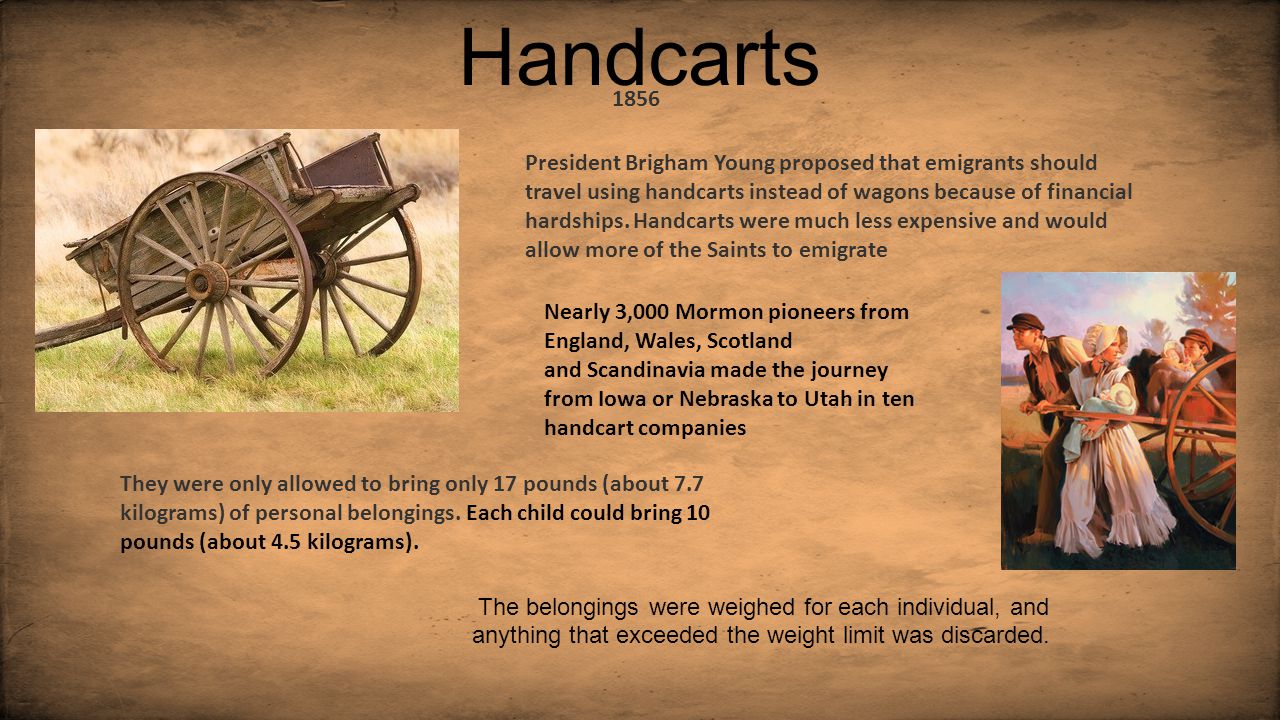
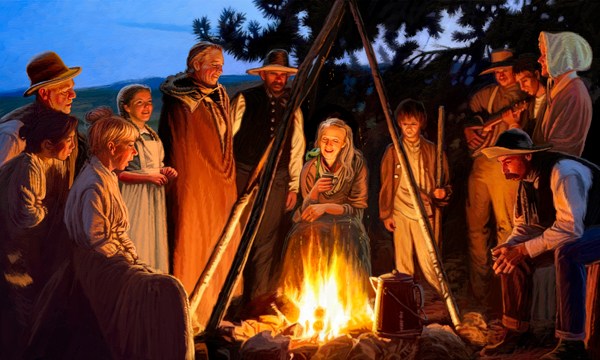

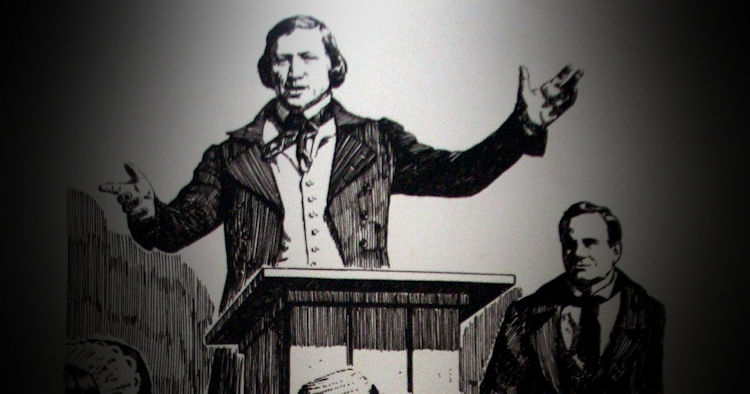
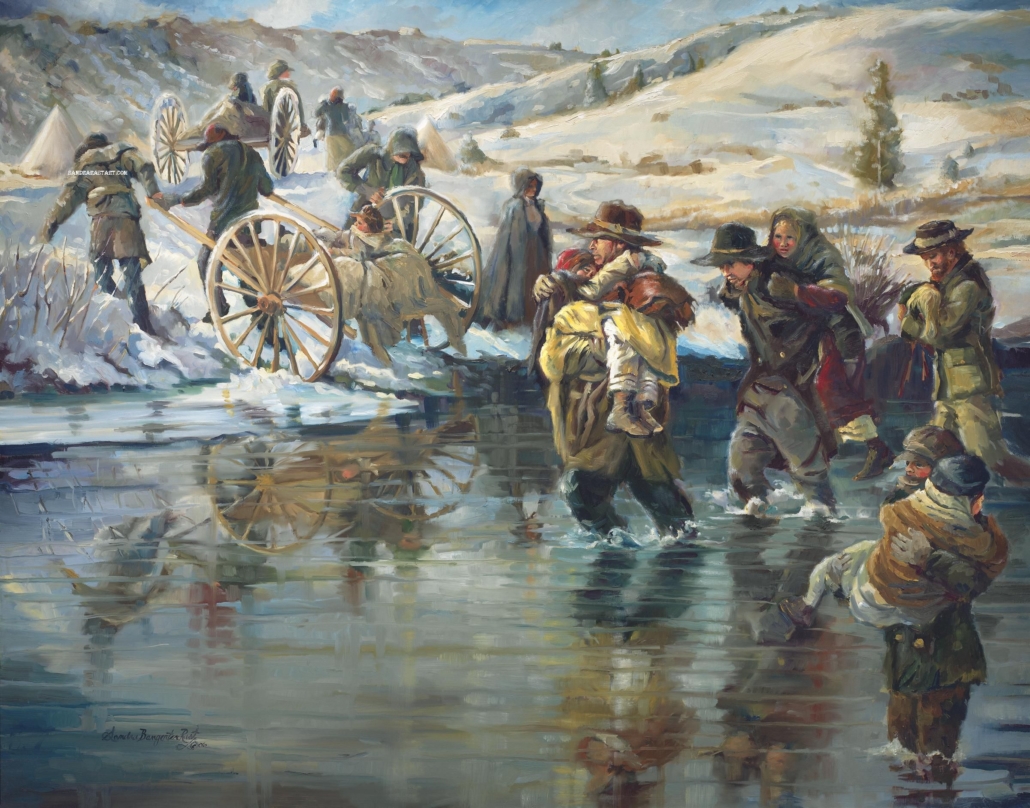
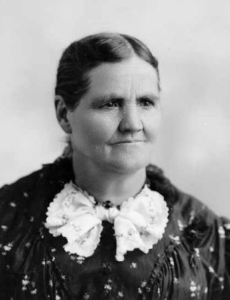
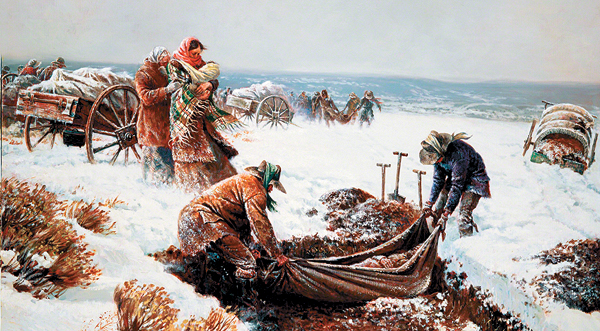
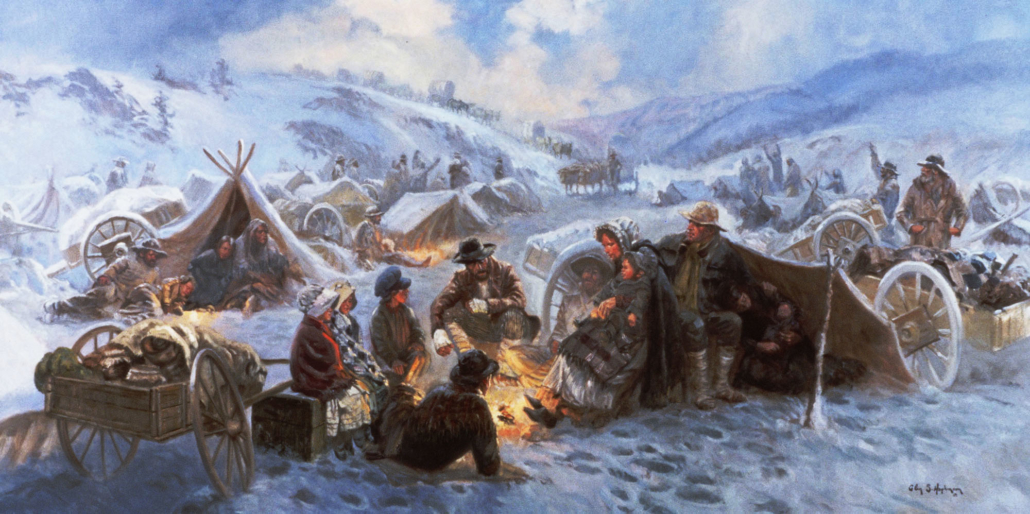
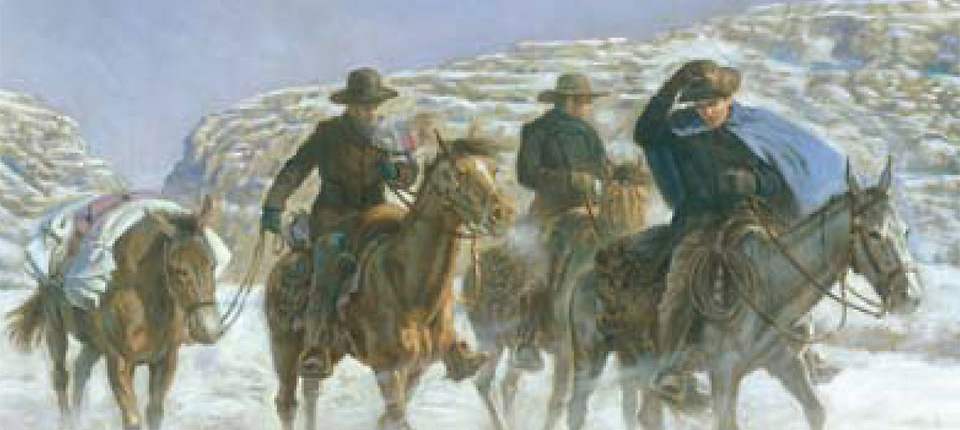
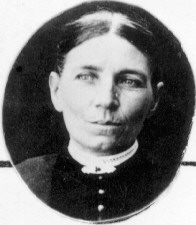
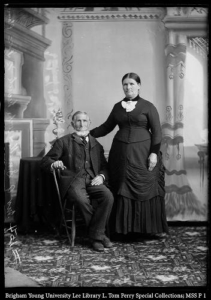
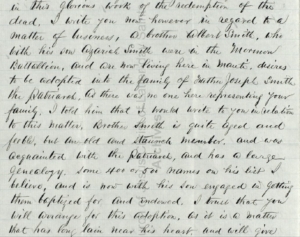


Leave a Reply
Want to join the discussion?Feel free to contribute!